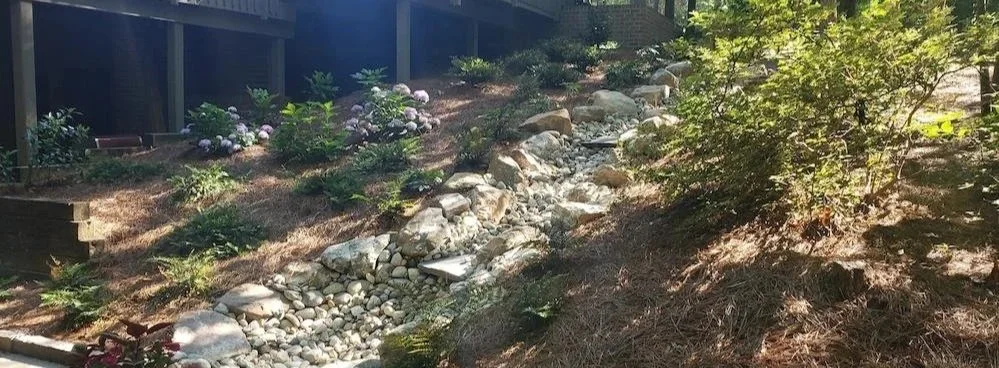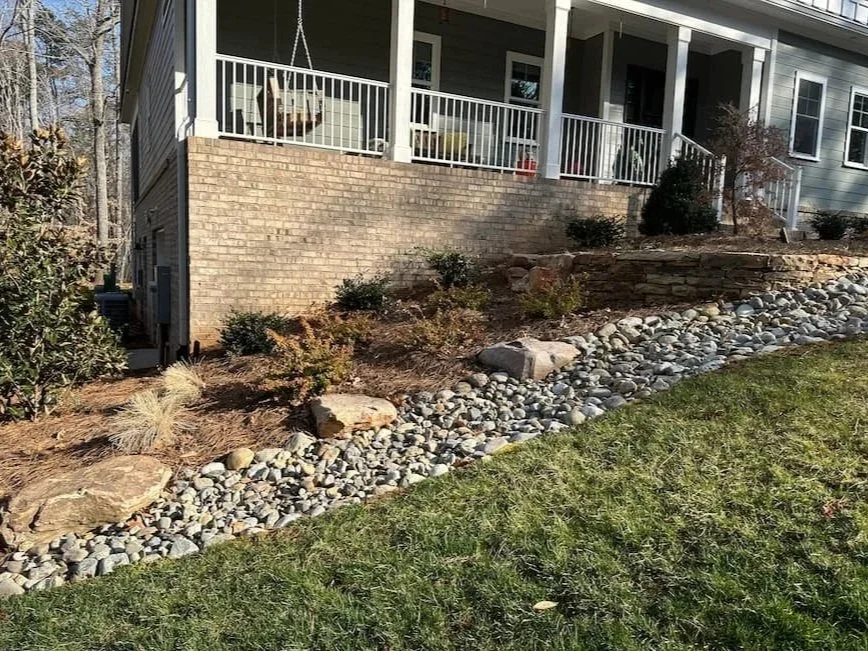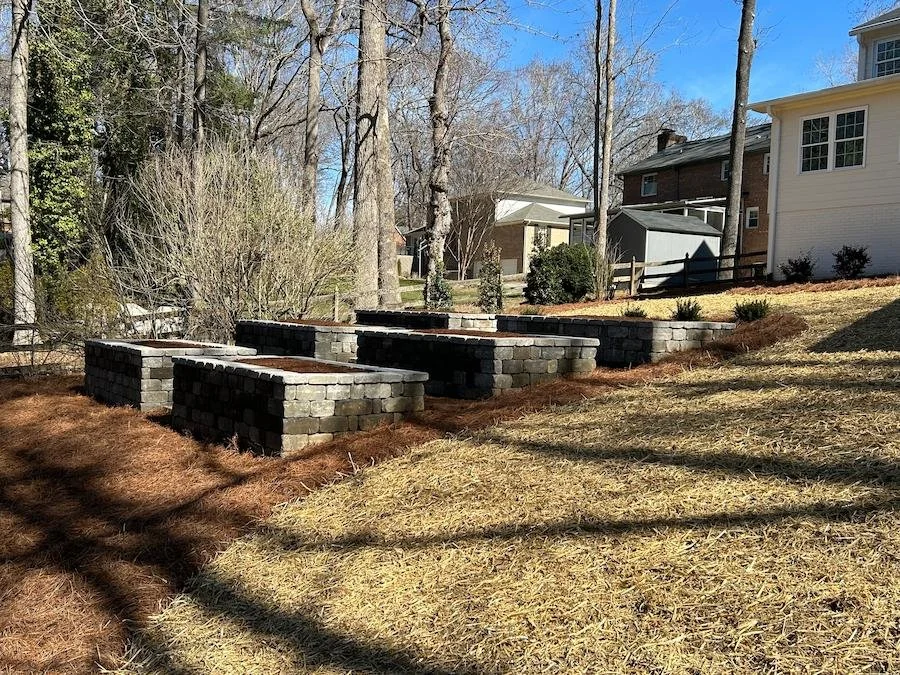Preparing for Storms: Landscaping Tips for Better Drainage
After an unusually heavy rainfall event, your landscape may reveal drainage problems you were unaware of. Pooling water, soggy patches, or even erosion can appear after big storms, leaving homeowners wondering how to manage it. These drainage problems can harm your landscape, damage plants, and even impact the foundation of your home if not addressed.
Why Proper Drainage Is Essential
Good drainage is key to protecting your lawn, garden, and home. When water doesn’t flow properly, it can lead to flooding, erosion, and root rot, weakening the health of your plants. Furthermore, improper drainage can cause long-term damage to your property, especially around the foundation. Addressing drainage issues early will save you money and prevent bigger problems down the road.
Effective Drainage Solutions for Your Landscape
Dry creek beds direct water flow and reduce erosion.
Start by evaluating the slopes of your yard. Water naturally flows downhill, so ensure that your property is graded away from your house to direct water away from your foundation. If the water has no place to go, it will pool around the foundation, increasing the risk of flooding.
In areas where the slope isn’t enough, consider adding french drains or dry creek beds. These solutions direct excess water to lower parts of the yard or into a drainage system. French drains are especially useful for areas that tend to collect water, while dry creek beds provide an aesthetically pleasing way to manage runoff.
For soggy garden beds, consider elevating the soil level with raised beds or using well-draining soil. Proper soil composition can also help plants withstand heavy rains, reducing the risk of root rot. If you notice frequent standing water or wet spots, these adjustments will help prevent long-term damage to your plants.
Another option is to install rain gardens. These areas are designed to absorb rainwater through deep-rooted plants that help filter and manage excess water. Rain gardens can be a natural, eco-friendly way to manage stormwater runoff while also enhancing the beauty of your landscape.
Raised beds will prevent water moving downhill from washing out the garden.
Finally, check your gutters and downspouts to ensure they are clear of debris. Clogged gutters can overflow, causing water to flow toward your home’s foundation. Make sure your downspouts are directed away from the house, ideally leading into a drainage system or to a lower part of the yard.
Get Help with Drainage Issues
If you’ve noticed any drainage issues after the recent storms, don’t wait for the next downpour to address them. Proper drainage is essential for maintaining a healthy landscape and protecting your property. Our team at New Garden Landscaping can help assess your landscape and recommend the best drainage solutions for your specific needs. Contact us today for a consultation and get your landscape storm-ready.



